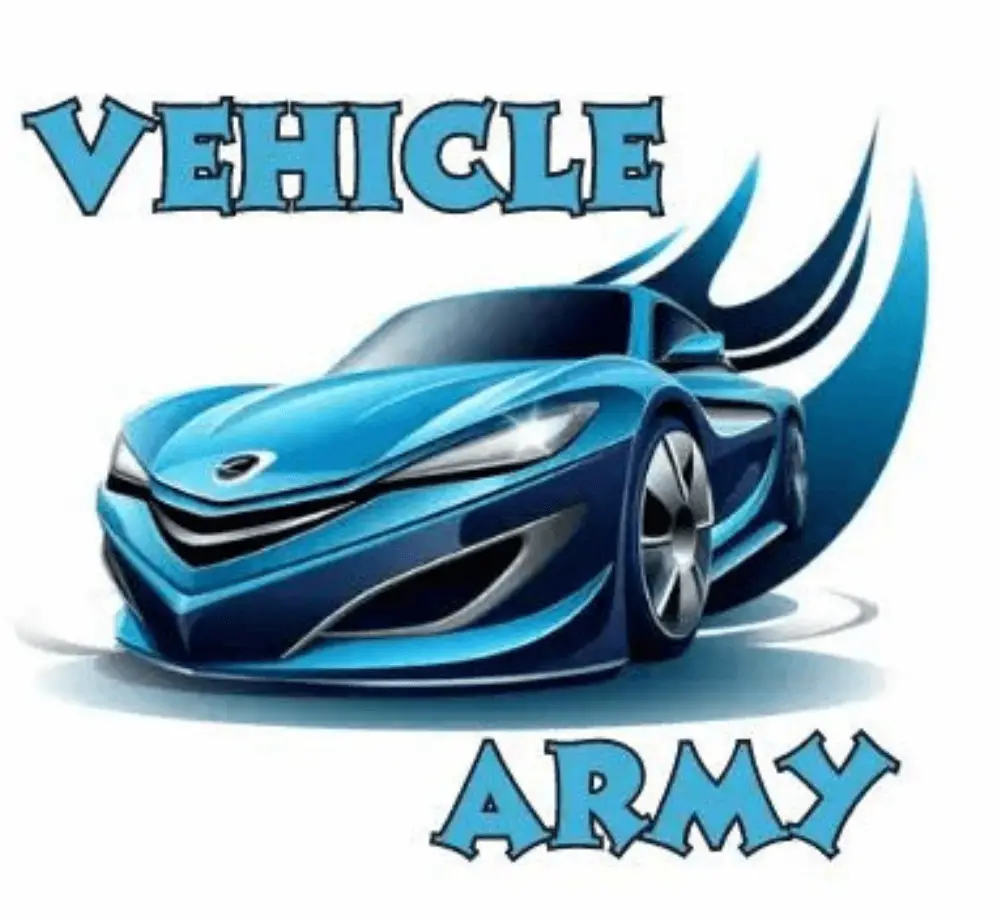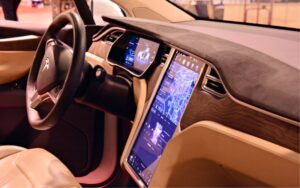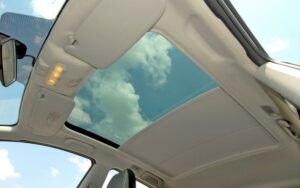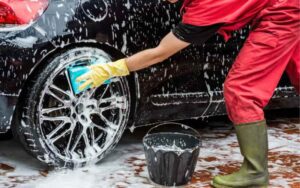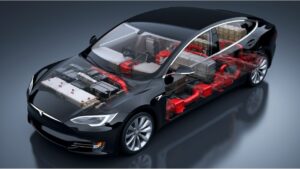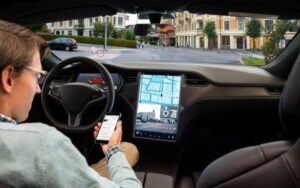Tesla Panel Gaps: Myth or Reality?
Welcome to the world of Tesla! Did you know that the small spaces between the panels of your car, also known as panel gaps, are a critical aspect of its quality control and customer perception? In this article, we’ll explore why panel gaps matter, especially when it comes to driving a Tesla. Let’s get started!
Understanding Panel Gaps in Tesla Vehicles.
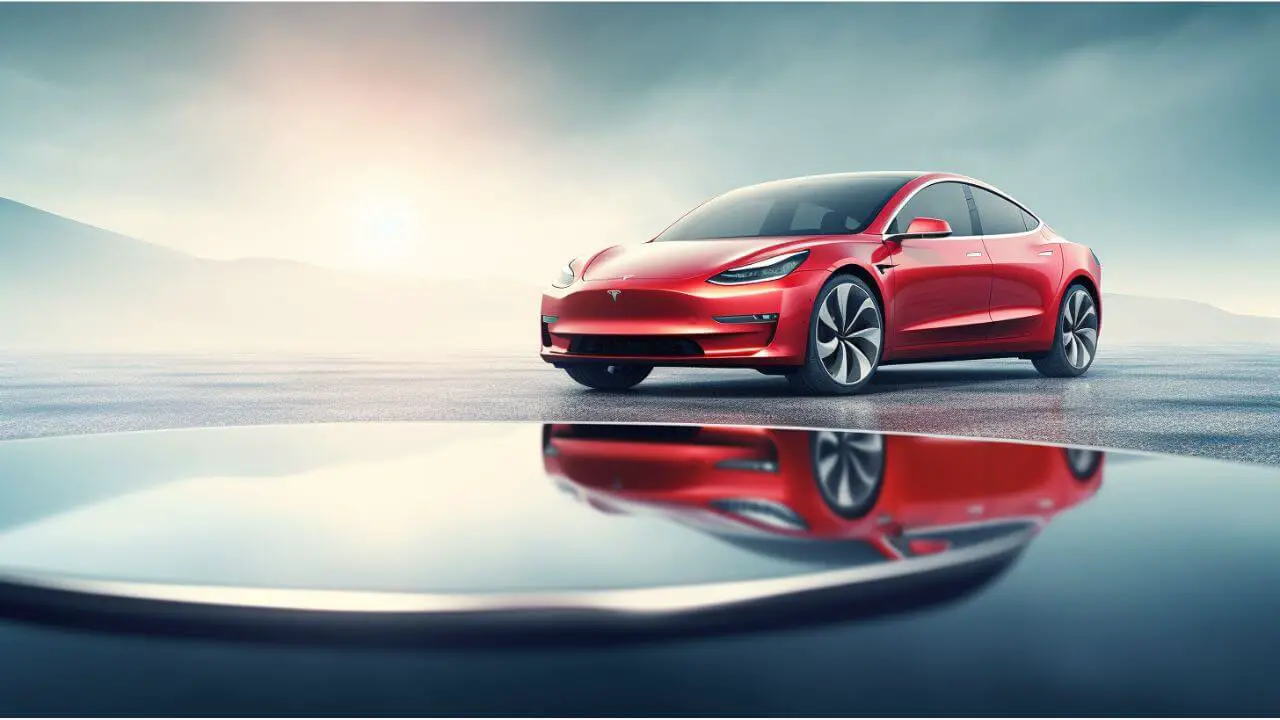
Ah, panel gaps—the enigmatic spaces that lurk between your Tesla’s body parts. To the untrained eye, they might seem like mere lines, but they’re so much more. Let’s elevate this chat from car talk to something a bit more… scientific.
You see, panel alignment isn’t about perfection; it’s about body panel tolerances. These gaps have a job, and it’s not just to annoy you.
They account for expansion and contraction, especially critical in electric vehicles where temperature fluctuations are the norm.
So, what’s the ideal gap width? Well, there’s no one-size-fits-all, but here’s a little table to stir your curiosity:
| Ideal Gap Width | Significance |
|---|---|
| 1-3 mm | Minimal, usually in interior components |
| 3-5 mm | Uncommon may signify quality control issues |
| > 5 mm | Uncommon, may signify quality control issues |
Let’s debunk some common misconceptions:
- Myth 1: Wider gaps mean poor quality. Nope, it could be designed that way for engineering reasons.
- Myth 2: Tesla’s panel gaps are worse than other brands. Really? Most studies say otherwise.
- Myth 3: Panel gaps affect aerodynamics significantly. Not quite. They’re a drop in the aerodynamic bucket.
Tesla’s approach to vehicle assembly is, to put it lightly, revolutionary. In a world obsessed with precision, they’re the rebels—testing, adjusting, and re-testing to get those gaps just right. And that’s part of the Tesla mystique; they defy auto industry standards to set their own.
You might have heard tales about Tesla Model 3 gaps or fretted over the finish on a Model Y build. But let’s be real—every car brand has its quirks. Tesla’s are just under the microscope because, well, they’re Tesla.
So, the next time you find yourself squinting at those spaces between panels, remember—they’re not flaws; they’re features. Tesla’s panel gaps are a blend of engineering, aesthetics, and a sprinkle of Silicon Valley daring.
Now that you’re a panel gap connoisseur, what’s next? Stick around; we’re just getting started.
Manufacturing Factors Contributing to Tesla Panel Gaps.
Do you know those cooking shows where chefs reveal their secret sauce? Well, consider this the automotive version. We’re pulling back the curtain on Tesla’s factory—the birthplace of your dream EV.
Here, automotive manufacturing isn’t just an assembly line; it’s a ballet of robots, lasers, and good old human ingenuity.
But let’s get granular. Panel gaps don’t just appear; they’re the offspring of several manufacturing elements:
- Material Selection: Tesla opts for a mix of aluminum and steel, each with its own thermal properties.
- Cutting Techniques: From water jets to laser cutting, the method impacts the finish.
- Assembly Line Speed: Yup, even the pace at which Teslas roll off the line can influence panel gaps.
| Factor | Impact on Panel Gaps |
|---|---|
| Material Thermal Rates | Expansion and contraction during temperature changes |
| Cutting Precision | Accuracy of gaps and overall fit |
| Assembly Speed | Faster assembly could lead to less accurate fitting |
Tesla’s vehicle assembly line is a thing of beauty but also complexity. Robots swivel and pivot, aligning panels with a level of precision that’s more Swiss watchmaker than a car factory.
Tesla has even patented some of their machinery—talk about commitment to body panel tolerances.
Now, what about quality control? Tesla’s got an entire team eyeballing every inch of the car.
Sometimes, they even go back and rework a section if it’s not up to snuff. They’re not playing; they’re setting a new standard in automotive engineering.
So, when someone mentions Tesla Model 3 gaps or questions Tesla Model S quality, remember this: Tesla is the disruptor in a sea of sameness.
They’re still tweaking, evolving, and learning how to perfect those elusive panel gaps. And let’s be honest, it’s those quirks that make Tesla not just another car but a conversation starter.
You’ve heard the phrase, “It’s not a bug; it’s a feature,” right? In Tesla’s world, it’s more like, “It’s not a gap; it’s an engineering marvel.”
Tesla’s Response to Panel Gap Concerns.
Ah, the art of the comeback. Nobody does it quite like Tesla. Scrutiny over panel gaps? They don’t just sweep it under the rug; they roll up their sleeves and get to work.
In the heart of Silicon Valley’s innovation ecosystem, Tesla’s approach to quality control is, well, nothing short of electric.
So, how exactly does Tesla tackle these panel gaps? Here’s the rundown:
- Customer Feedback Loops: Trust us, they’re listening. Tesla has one of the most engaged user communities around.
- In-house Rework: Cars occasionally get pulled aside for adjustments, even after initial assembly.
- Software Updates: Believe it or not, Tesla uses data analytics to fine-tune its manufacturing processes.
| Tesla’s Strategy | How It Impacts Panel Gaps |
|---|---|
| Feedback Utilization | Directly influences design tweaks and manufacturing changes |
| Quality Assurance | Rigorous checks and potential rework |
| Data-Driven Decisions | Software optimizations for better alignment and fit |
But wait, there’s more than just nuts and bolts here. Tesla also addresses the aesthetic aspects, like paint finish and exterior detailing, which often get entangled in the panel gap conversation.
It’s not just about fixing a gap; it’s about enhancing the whole visual experience of the car.
Are you concerned about your Tesla Model 3 gaps? Are you worried that your Tesla Model Y build isn’t up to snuff? Tesla’s customer service isn’t your typical call-and-wait ordeal.
They’re proactive, sometimes reaching out to customers to schedule adjustments. They know your Tesla isn’t just a vehicle; it’s an extension of you.
So, are they perfect? No, but perfection is a moving target, especially in the world of automotive engineering.
Tesla is in a constant state of iteration, and that includes their approach to panel gaps. It’s like watching your favorite TV series; just when you think you’ve got it figured out, they throw in a plot twist.
Bottom line: Tesla is more than aware of panel gap chatter, and they’re not just sitting idle. They’re shifting gears, literally and figuratively.
Comparison of Tesla Panel Gaps with Other Automakers.
So, you’ve heard about Tesla’s panel gap issues, but how do they stack up against the competition? Welcome to the ultimate showdown—the Tesla universe versus the well-trodden terrain of auto industry standards. Spoiler alert: It’s not an apples-to-apples comparison.
Let’s talk benchmarks. Traditional automakers have been in the game for decades, perfecting their vehicle aesthetics, fit, and finish. Brands like BMW, Mercedes, and Audi are the old guard, and they’ve had time to finesse those pesky panel gaps.
| Brand | Known For | Typical Panel Gap (mm) |
|---|---|---|
| Tesla | Innovation, Electric Range | 3-5 |
| BMW | Performance, Luxury | 2-4 |
| Audi | Design, All-Wheel Drive | 2-4 |
| Mercedes | Luxury, Reliability | 2-4 |
But here’s the rub: Tesla is playing a different game. They’re not just an automaker; they’re a tech company shaking the very foundations of automotive manufacturing.
When you buy a Tesla, you’re not just getting a car; you’re buying into an ethos that challenges the status quo.
Now, let’s set the record straight:
- Myth 1: Tesla has the worst panel gaps in the industry. Nah, they’re pretty much in the ballpark.
- Myth 2: Traditional brands never have panel gap issues. Trust us, they do; it’s just not headline news.
Why the scrutiny on Tesla? Simple. They’re the David in a world of Goliaths, the indie band that made it big.
Their every move—from vehicle assembly line tweaks to quality control measures—gets dissected and discussed. But let’s be candid; it’s this constant scrutiny that propels Tesla to iterate and improve.
Sure, you might notice a panel gap here and there, but what you’re really seeing is a snapshot of a brand in evolution. Tesla isn’t just another car on the road; it’s the poster child for what the future could look like.
So, the next time you compare a Tesla to another brand, remember: You’re not just comparing cars; you’re comparing philosophies, histories, and visions of the future.
Debunking Myths About Tesla Panel Gaps.
Hold the phone, folks. We’re about to go myth-busting, Tesla style. You see when a brand like Tesla takes center stage, it’s like throwing chum in the water—a feeding frenzy of rumors, myths, and half-truths.
So, let’s slice through the noise and get down to some factual information and expert opinions.
Here’s a table to distill the essence:
| Common Myths | The Reality |
|---|---|
| Tesla has the worst panel gaps. | Studies show they’re on par with, or better than, many brands. |
| Panel gaps affect battery life. | No scientific evidence supports this claim. |
| Tesla ignores quality control. | Tesla employs rigorous quality control and even recalls when necessary. |
Now, about those common misconceptions:
- Myth 1: Tesla’s panel gaps are a sign of rushed manufacturing. Wrong. They’re calculated elements in a complex engineering puzzle.
- Myth 2: Panel gaps mean your Tesla is a lemon. Nope, they’re common in the automotive world, not just a Tesla quirk.
- Myth 3: Panel gaps are proof that Tesla cuts corners. It is laughable, considering the brand’s relentless focus on innovation.
Look, panel gaps are part of the car world, not just a Tesla Model 3 or Model S peculiarity.
But because Tesla is Tesla—equal parts carmaker and tech maverick—those gaps get more limelight. It’s almost like the world expects Tesla to reinvent the wheel, literally and figuratively.
It’s time to update the narrative. Tesla isn’t just meeting auto industry standards; they’re setting new benchmarks in automotive engineering. Those gaps you see? Think of them as spaces where Tesla is constantly rewriting the rules.
So, let’s put the misconceptions to bed. Tesla’s panel gaps aren’t a bug; they’re a feature of a brand that’s perpetually in beta, always striving for the next big thing. And that’s why we’re all so captivated, right?
Tips for Tesla Owners and Potential Buyers.
Got your eyes on a Tesla, or are you already part of the club? Either way, let’s talk action—specifically, what you can do about those much-talked-about panel gaps.
Here’s where the rubber meets the road, or should we say, where the panel meets the frame.
First off, the essentials: vehicle inspection. You don’t have to be a mechanic; you just need to be observant. Here are some checkpoints:
- Door Panels: Check the alignment. A misalignment here could cause wind noise.
- Trunk and Hood: Make sure they close flush, with no weird angles.
- Windows: Look for any gaps that could let in moisture or noise.
| What to Check | Why It Matters |
|---|---|
| Panel Alignment | Misaligned elements could indicate haste in the assembly |
| Paint Finish | Inconsistencies can indicate poor assembly |
| Interior Components | Misaligned elements could indicate haste in assembly |
Next, if you spot something off, reach out to Tesla customer service. They’re more responsive than your average car company. Trust us; a proactive approach works wonders in getting those panel gaps sorted.
What if you’re not yet a Tesla owner, but you’re flirting with the idea? Simple—be an informed consumer.
Dive into Tesla forums, read expert reviews, and maybe even consult with current owners. Exterior detailing and paint finish are also worth scrutinizing before you make the leap.
A quick tip: If you’re eyeing a used Tesla, get it inspected by a certified mechanic who specializes in electric vehicles. They’ll catch things you might overlook, like body panel tolerances and fit and finish.
So there you have it—your quick guide to navigating the world of Tesla panel gaps. Think of it as your roadmap to a smoother Tesla journey, from the showroom to the open road.
Conclusion
Here we are, folks—the finish line in our deep dive into Tesla’s panel gaps. What have we learned? For one, Tesla is no ordinary automaker; it’s a tech powerhouse changing auto industry standards.
| Your Takeaway | Why It Matters |
|---|---|
| Panel Gaps | Not a flaw but a feature. An engineering marvel, even. |
| Quality Control | Tesla’s not just winging it; they’re in a constant feedback loop, fine-tuning the drive of tomorrow. |
So whether you’re a Tesla Model 3 owner or just an electric dreamer, remember: Those gaps you see? They’re a part of the evolution.

Hey, I’m Michael Davis, a 35-year-old with a degree and a love for cars and tech. Since I was a kid, cars have been my thing—so much that I even thought they ran on magic beans! Fast forward, and I’ve built Vehicle Army, your one-stop-shop for easy-to-understand car facts.
